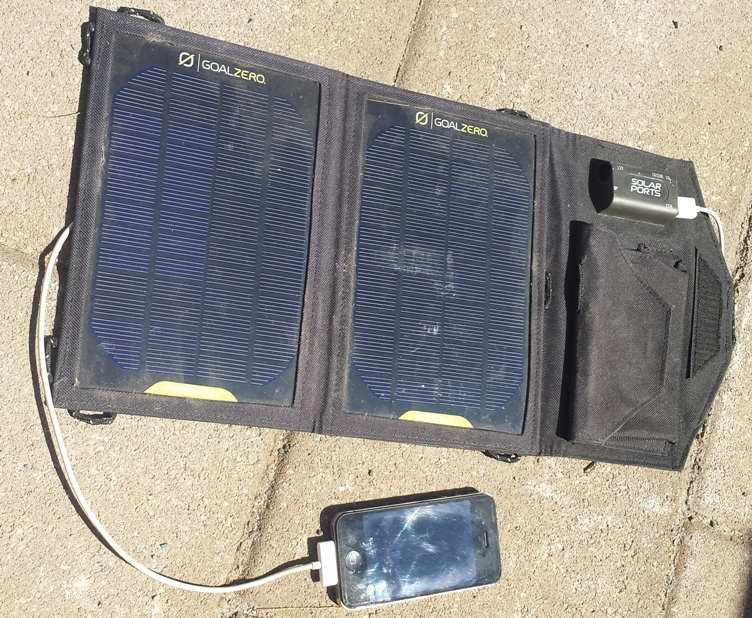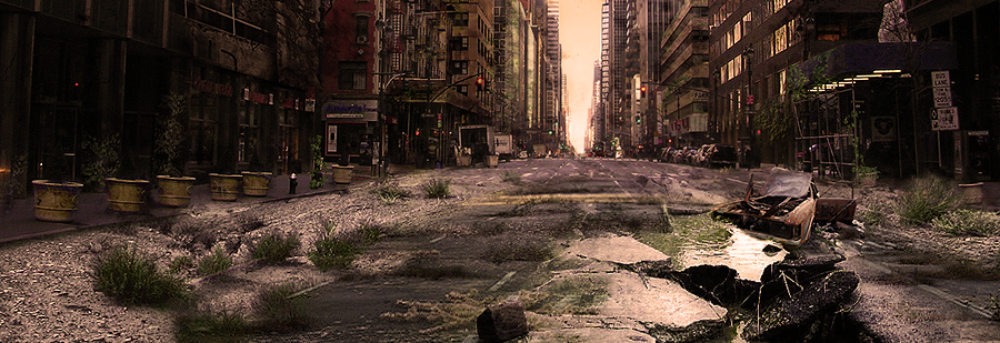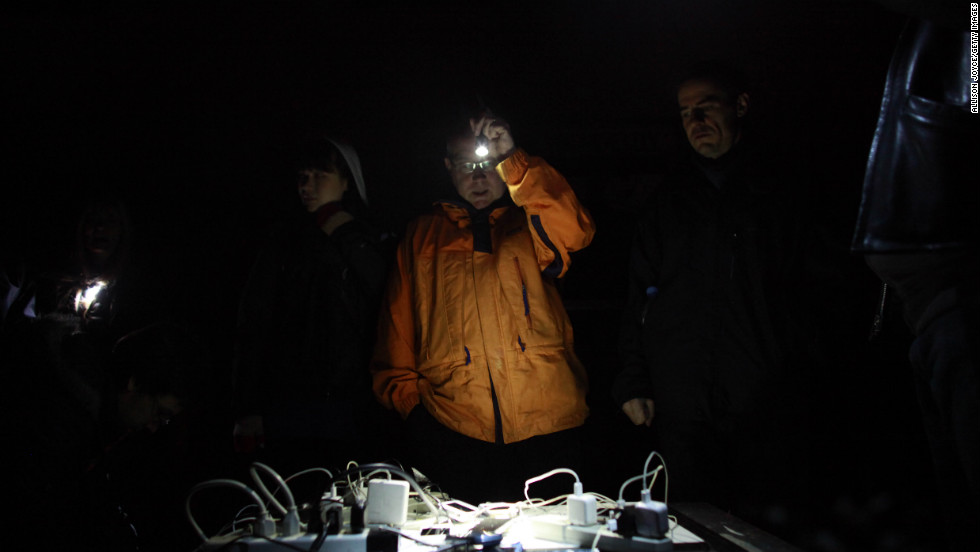I did a post several years back on solar charging of cell phones, and the technology has changed a tiny but in those intervening years. I have a Goal0 Nomad panel and decided to test it out the other day. I took an old dead iPhone, USB cable, and the Nomad7 and set them out in the yard directly in the sun to charge.
A couple things you have to keep in mind – first, take the device you’re charging and protect it from the sun and heat. If you don’t, they’ll go into thermal shutdown mode. I usually put the phone under the panel but off the conductive ground. Secondly, and this is really important, higher end electronics like cellphones are very fussy about charging irregularities. If the voltage fluctuates, as it might when the sun goes behind a cloud, that change in electrical input may cause your device to go out of charge mode or something. The solution is to use the panel to charge a battery pack and then use the battery pack to charge the phone. Goal0 is now selling a package that does exactly that – GOAL ZERO 42020 Venture 30 Solar Recharging Kit.
This is pretty much your one-stop solution to this:
No doubt someone will opine that in a blackout condition the cell towers will mostly be dead too, so why worry about your cellphone? If you think that, then you really are too short-sighted to be a survivalist. Turn in your camo and freeze-drieds and take up another hoby..like model railroads or something.
Even in a world with cell towers down, your phone takes pictures, takes video, does math functions, accesses files from local networks, acts as a flashlight, provides entertainment, tracks supplies, etc, etc. In short, it’s a very useful tool even when it’s not being used as a communication device. (And, yes, you can even use them, to a degree, for communication using devices such as Go tenna.)
Anyway, I plugged in the dead iPhone, set it under the panel, and came back a few hours later and…100% charged.
 Moral of the story is that although having a generator is nice, it’s a bit overkill for just charging phones in a power-failure situation. So…these panels (with the battery) are excellent alternatives.
Moral of the story is that although having a generator is nice, it’s a bit overkill for just charging phones in a power-failure situation. So…these panels (with the battery) are excellent alternatives.



just researched this and how to recharge aa/aaa batteries in the field and came up with a similar solution using sunjack components. my phone is a one trick pony and requires an adapter i haven’t found yet, though i may have to give in soon and get a new one as the battery for it is weakening and obsolete/unavailable. i try stick to standard aa/aaa gear so i can use the same cells throughout…..and you are correct, the power pack acts as a buffer and greatly increases charging efficiency even in aa/aaa battery chargers. they are getting so “smart” that they can’t handle brown outs either. go figure.
I try to standardize on he AA batts. The big advantage to using the battery pack as a buffer to even out the voltages is that, surprise, it also gives you some AA batts to use in your other gear if you need.
Is this set-up for when you are out camping or whatnot? Just trying to compare the value of this versus just having a permanent panel and battery like I do. With a standing system the battery is charged. This seems like something you pull out of storage as needed.
It’s relatively cheap, and maximizes portability. For camping, travel, etc. Sometimes those interesting places we wind up in aren’t always suited for just plugging in a wall charger.
This the one I want, but most likely will pic up the newer version of yours over at Amazon for 63.99 and free shipping.
http://www.goalzero.com/p/138/goal-zero-yeti-1250-solar-generator-kit
This looks like a great little solution if you’re trying to stay mobile. If you need to charge from a more permanent location, a bigger panel and battery could be a cheaper overall approach. I have a 100W panel and a lead acid battery – which can then run a 12 AA NiMH cell charger, or charge other 12 V battery packs. The big panels can be found on Amazon at around $1/watt, or less.
Smartphones with wifi will be very handy even if the cell towers are down. It is pretty easy to set up ad hoc communication systems called mesh networks. No need to learn ham radio tech, pass tests, or buy a bunch of radio equipment just to communicate, either. As you pointed out, thinking that smartphones and tablets are useless without cellular communications is extremely shortsighted.
In a grid-down situation, your neighbors will not hear your solar panel charging things; unlike your generator in a silent environment.
Many people don’t realize how far sound travels with no background noise.
I have several small solar chargers and batter packs. I even saw a battery pack at the Dollar Tree today. These things are cheap enough to get several and put them away in a lined popcorn tin.
I rec’d on of these—Zebora Powerful Portable Solar Charger Equipped with 2 Foldable Solar Panels and 10,000mAh Dual USB Ports Power Bank for Mobile Devices, Pads, Gopro Camera, GPS and More Other USB-charged Devices for a fathers day gift a couple years ago—excellent—I use it all the time camping, hiking, backpacking and traveling abroad—ordered from amazon $37.00—going to purchase another and leave in our camper
A phone is no longer a phone.
Assumign any generation of smartphone, it is a personal computer that also, conveniently, has the ability make telephone calls, provided the cell network is functional.
Anyone who didn’t know this is too stupid to be reading the Internet, and should indeed go back to other pursuits.